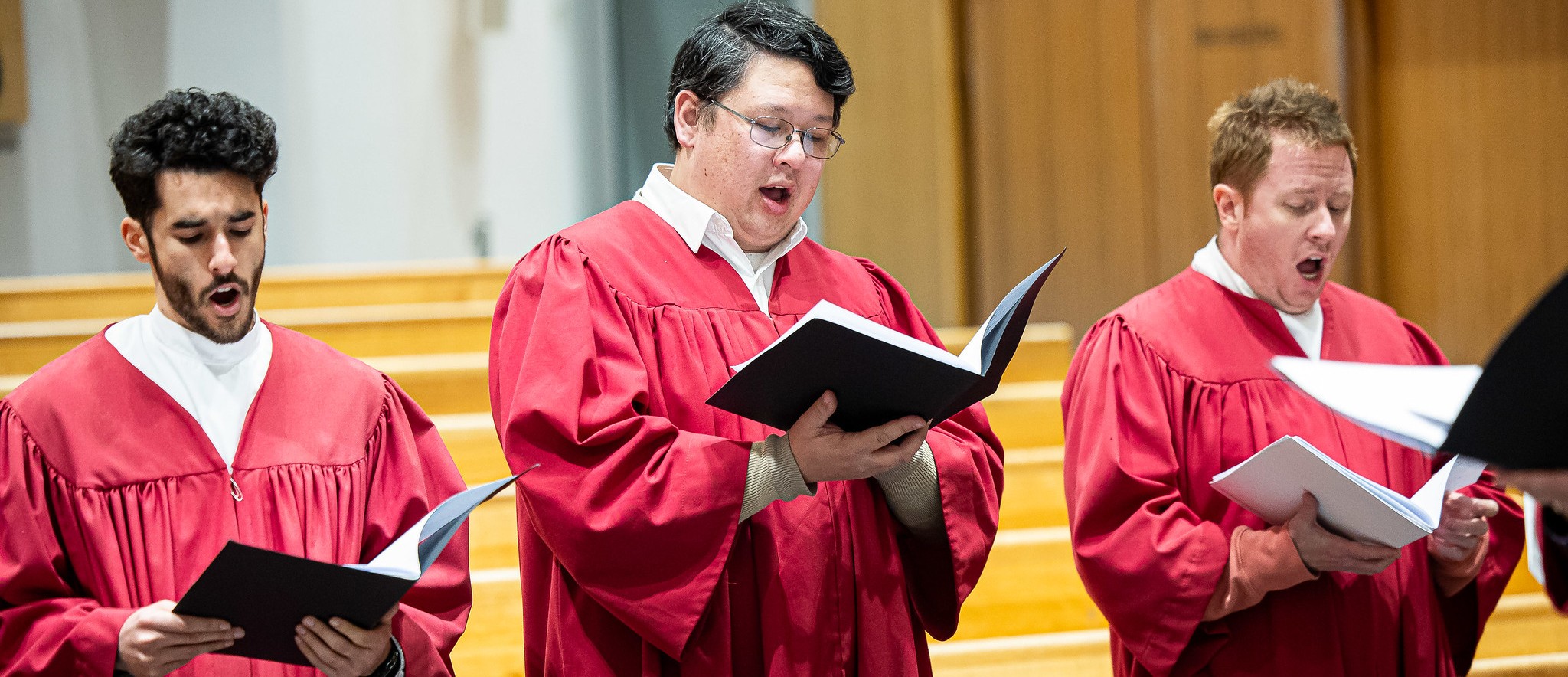Choirs, Christmas & Music Choices
Michael Mangan

In an early November post in a US-based Catholic Music Directors Facebook group, a parish music director requested suggestions for a “festive” Mass setting that could be used in her parish for Christmas liturgies. From the responses, it became clear that many of the group’s participants used a “special” Mass setting for Christmas.
One director replied that their parish “typically performs Schubert’s Mass in G or Mozart’s Mass in G” for Christmas (emphasis added). Another indicated that the choir needed to be rewarded for their service during the year by singing something fresh and new for Christmas. This prompted reflection on the role of acclamations and Mass settings, and the importance of a broad pastoral lens when planning and preparing music for Christmas and other liturgies where much of the assembly may not be regular church-goers.
The General Instruction of the Roman Missal (GIRM) states that “great importance should be attached to the use of singing in the celebration of the Mass” and advises that “preference should be given to those that are of greater importance and especially to those to be sung by the priest or the deacon or the lector, with the people responding, or by the priest and people together” (#40).
Drawing on Musicam Sacram, the US Conference of Catholic Bishops document, Sing to the Lord: Music in Catholic Worship (STL), identifies the acclamations, (Gospel Acclamation, Holy Holy Holy, Mystery of Faith and Amen), as being among the highest ranking of the parts that are to be sung. “The acclamations of the Eucharistic Liturgy,” the document states, “arise from the whole gathered assembly as assents to God’s Word and action” (STL #115).
It is clear from the Church teaching quoted above that just having these parts sung is not sufficient. Having the choir sing a new, unknown “festive” Mass setting is not an option. The acclamations are to be “sung by the priest and people together” and must “arise from the whole gathered assembly.” The unified, active participation of the whole assembly in singing the acclamations is fundamental. This is the members of the liturgical Body of Christ fully exercising their baptismal priesthood by actively participating together in the Eucharist.
And surely, Christmas is the worst time to introduce a new Mass setting! All parishes have visiting family members and the “less churched” joining them over the festive season. Many of these visitors won’t be familiar with any Mass setting, and it makes no sense to choose one that is also unfamiliar to regular parishioners. Using a setting well-known by the community will at least allow the acclamations “to arise from many of the gathered assembly as assents to God’s word and action.”
Even if visitors themselves are unable to fully participate in the acclamations, they can at least be offered an experience of the active participation of those around them. This reinforces that liturgical music is not a choir performance to be listened to but a fundamental way to unite a community of faith in praise and thanks for God’s gift of a saviour to the world. A well-known singable Mass setting, supported by a brief rehearsal before Mass, may even enable visitors to participate.
And it goes without saying that no matter how beautiful, neither Mozart’s nor Schubert’s Mass in G will fulfill the principles and requirements for the full conscious and active participation of the assembly in the liturgy. The place of traditional choral repertoire in heightening internal participation (Constitution on the Sacred Liturgy, #14) through artistic beauty is acknowledged. Choir-facilitated internal participation is perfectly placed as a prelude, postlude or during the Preparation of the Offerings. However, the acclamations are not a time for solely internal participation. Choral Mass settings which sideline the voice of the faithful and prevent the acclamations arising from the whole assembly may be better suited to the concert stage than the liturgy.
The necessity of both internal and external participation in acclamations and Mass settings applies equally to contemporary repertoire which may discourage full, conscious and active participation due extreme vocal range or rhythmic or melodic complexity which renders it unsuitable for congregational singing.
Pastorally, in addition to selecting a familiar, singable Mass setting, it is important, especially at Christmas, to choose other suitable repertoire that everyone looks forward to and can confidently sing. Break out Joy to the World and O Come All Ye Faithful. Raise the rafters with Angels We Have Heard on High. Rather than reward the choir with something new, reward the assembly with something familiar.
This article was originally published in the Newsletter of the Australian Pastoral Musicians Network (Vol 11/4, December 2021). Reprinted with the permission of the author.
